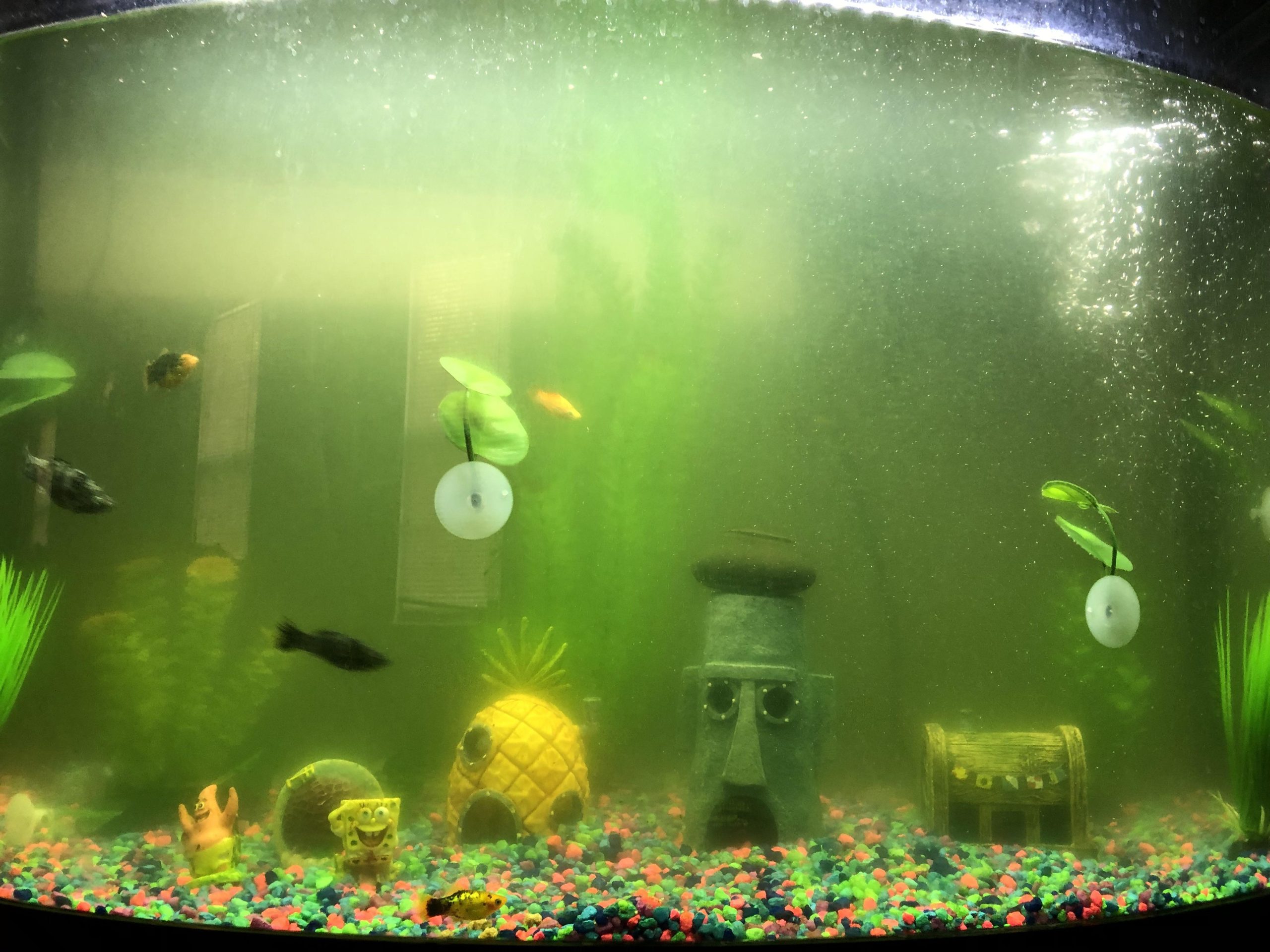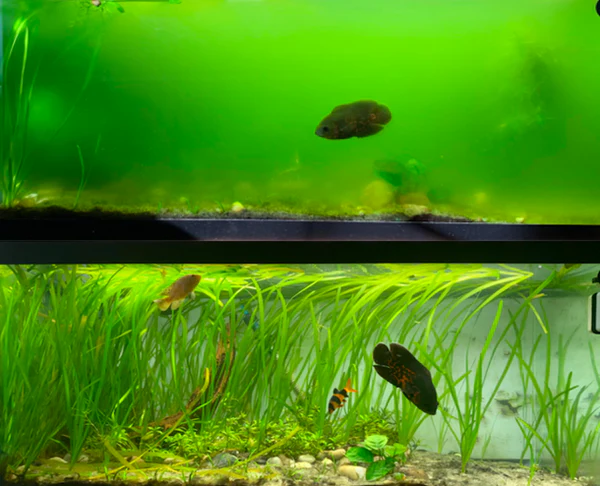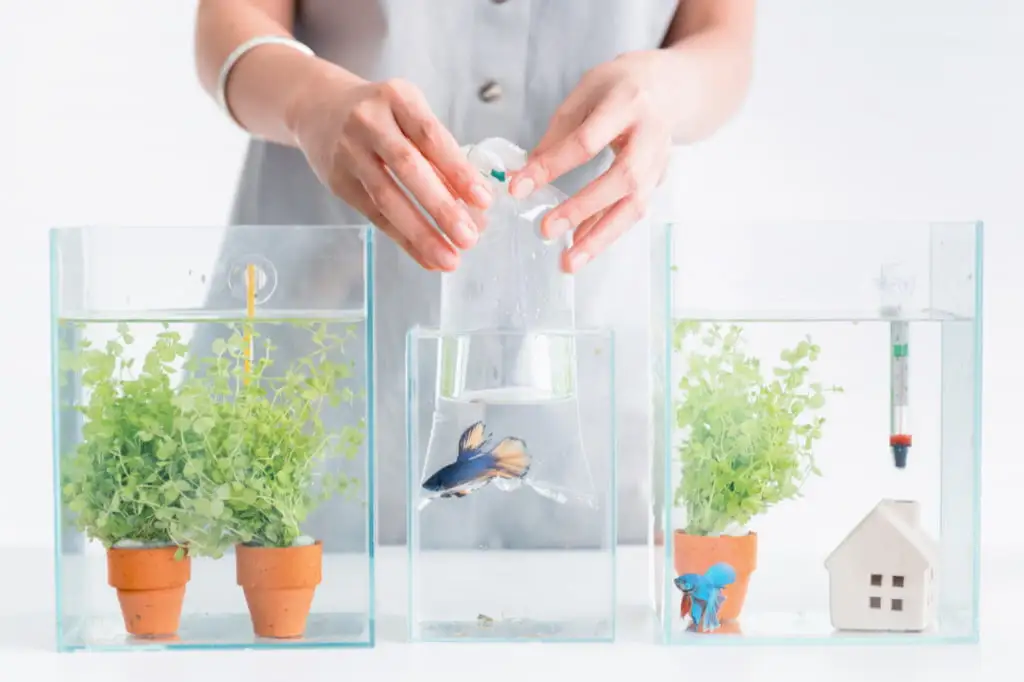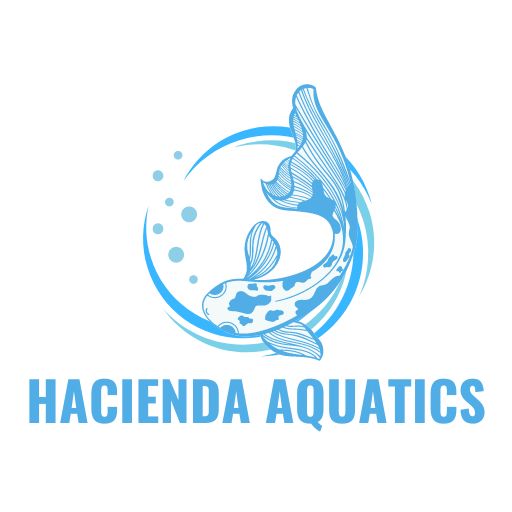Aquatic Knowledge
How to Fix Green Aquarium Water: A Comprehensive Guide
Is your aquarium looking more like a pond lately, with murky, green water? Don’t worry, you’re not alone! Green aquarium water, often caused by algae blooms, is a common issue for both beginner and seasoned aquarists. In this article, we’ll dive deep into how to fix green aquarium water and explore ways to prevent it from returning, so you can keep your tank sparkling clean.
What Causes Green Water in Aquariums?

Before we jump into solutions, it’s crucial to understand why your tank is turning green. Algae blooms are usually the culprit. These microscopic plants thrive in water with excessive nutrients and light, quickly turning your once-clear water into a green, murky mess.
- Excessive Lighting: If your tank is getting too much light, especially direct sunlight, algae can grow out of control.
- Overfeeding: Fish food leftovers can decompose, releasing nutrients that algae feed on.
- High Nitrate and Phosphate Levels: These nutrients, from fish waste and uneaten food, can build up in your tank and fuel algae growth.
Now that you know what might be causing your green water, let’s move on to how to fix green aquarium water and get your tank back to its pristine condition.
How to Fix Green Aquarium Water

Let’s tackle the main problem—how to fix green aquarium water. There are several steps you can take, ranging from natural methods to more advanced techniques. Here’s a breakdown of some practical solutions.
Reduce the Amount of Light
One of the simplest ways to reduce algae growth is by cutting back on light exposure.
- Control Lighting Time: Limit your tank’s light exposure to about 8 hours a day. If your aquarium gets direct sunlight, consider moving it or using a blackout curtain.
- Use an Aquarium Timer: Setting your aquarium lights on a timer ensures they turn on and off at the right times, helping to prevent overexposure to light.
Do Frequent Water Changes
Changing your aquarium water regularly helps to remove excess nutrients that contribute to algae growth. Aim for a 25-50% water change every week until the green water issue subsides.
- Siphon the Substrate: While doing water changes, don’t forget to siphon the gravel or substrate to remove any debris or uneaten food that could be releasing nutrients into the water.
Install a UV Sterilizer
If you’re looking for a more high-tech solution, a UV sterilizer might be your answer. UV sterilizers use ultraviolet light to kill free-floating algae in your tank.
- How to Use: Install the UV sterilizer in your aquarium’s filtration system. As water passes through, the UV light kills off the algae, helping clear up green water within days. It’s a quick and effective way to tackle algae blooms.
Add Algae-Eating Fish
Certain species of fish, like otocinclus or Siamese algae eaters, can help keep algae growth in check. These little helpers naturally graze on algae, reducing its presence in your tank.
- Research Compatible Species: Make sure to choose algae-eating fish that are compatible with your current tank inhabitants. Some algae-eaters may have specific requirements or temperaments, so do your homework before adding them to your tank.
Use Chemical Algae Removers (With Caution)
Chemical algae removers are available in the market, but they should be used cautiously.
- Follow Instructions: Overuse of chemicals can harm fish and plants, so always follow the manufacturer’s guidelines. Chemical treatments should be a last resort, as they don’t address the root cause of algae growth.
Clean Your Tank Regularly
Keeping your tank clean is essential in preventing and solving green water issues.
- Wipe Down Glass: Use an algae scraper or sponge to clean algae from the aquarium walls.
- Trim Plants: If you have live plants, keep them trimmed and remove any dead leaves or debris that could contribute to algae blooms.
Detailed Steps to Fix Green Aquarium Water

Step 1: Assess the Situation
Before diving into corrective measures, it’s crucial to assess the current state of your aquarium. Begin by testing the water parameters to understand the conditions that may be contributing to the green water issue:
- Check pH Levels: Use an aquarium test kit to measure the pH level of your water. Algae growth can be influenced by pH imbalances, so ensuring your pH is within the recommended range for your aquatic life (usually between 6.8 and 7.8) is vital.
- Measure Nitrate Levels: High nitrate levels can fuel algae blooms. Test the nitrate concentration in your water. Ideally, it should be below 20 ppm (parts per million). If it’s higher, it indicates an excess of nutrients, which algae thrive on.
- Check Phosphate Levels: Phosphates are another key nutrient for algae. Test for phosphate levels; they should be as low as possible, preferably below 0.5 ppm. High phosphate levels often come from fish waste, decaying food, and other organic matter.
- Observe Fish and Plant Health: Look closely at your fish and plants. Are the fish showing signs of stress, such as unusual swimming patterns or changes in behavior? Are your plants healthy or showing signs of nutrient deficiencies? This observation helps determine if the green water is affecting the overall health of your tank’s ecosystem.
Step 2: Perform a Partial Water Change
To immediately improve water clarity, you’ll need to perform a partial water change:
- Prepare the New Water: Use dechlorinated water that matches the temperature and parameters of your aquarium. Tap water often contains chlorine and other chemicals that can harm your fish and beneficial bacteria.
- Remove Water: Use a siphon or aquarium vacuum to remove 25-50% of the tank’s water. The siphon will help you clean the substrate by removing uneaten food, fish waste, and other debris that contributes to nutrient overload.
- Replace with Fresh Water: Slowly add the prepared dechlorinated water back into the tank. This gradual process helps avoid sudden changes in water conditions that can stress your fish.
- Monitor Water Parameters: After the water change, recheck the water parameters to ensure they are within the desired range. Adjust as needed to maintain a stable environment for your aquatic life.
Step 3: Clean the Aquarium Equipment
Maintaining clean equipment is essential for effective filtration and preventing algae growth:
- Clean the Filter: Turn off and unplug the filter. Rinse the filter media in a bucket of removed tank water (not tap water) to preserve beneficial bacteria. Replace any worn-out filter media if necessary.
- Scrub Decorations: Use an aquarium-safe brush to scrub algae off decorations, rocks, and other tank furnishings. Avoid using soaps or detergents, as these can leave harmful residues that are detrimental to your aquarium’s ecosystem.
- Clean the Substrate: Use the siphon to vacuum the substrate thoroughly. This process removes organic debris and detritus that can contribute to algae growth.
- Check Equipment Functionality: Ensure that all equipment, including heaters and air pumps, is functioning correctly. Malfunctioning equipment can contribute to poor water quality and exacerbate algae problems.
Step 4: Add Algae-Eating Creatures
Introducing algae-eating organisms can help manage algae naturally and reduce future outbreaks:
- Choose Algae-Eating Fish: Consider adding species such as Siamese algae eaters, otocinclus catfish, or plecos. These fish feed on algae and help keep your tank clean.
- Add Invertebrates: Snails (like Nerite or Mystery snails) and shrimp (such as Amano shrimp) are effective at controlling algae and cleaning up detritus.
- Ensure Compatibility: Before adding any new creatures, check that they are compatible with your existing tank inhabitants and will thrive in your aquarium conditions.
- Monitor Population: Avoid overstocking your tank with algae-eaters, as this can lead to other imbalances in your aquarium. Maintain a balanced ecosystem where the algae-eaters can efficiently manage algae without becoming overcrowded.
Step 5: Use Algaecides Cautiously
If the green water persists despite other measures, you may consider using algaecides:
- Select the Right Algaecide: Choose an algaecide specifically designed for aquarium use. Follow the manufacturer’s instructions carefully to avoid overuse, which can harm beneficial bacteria and aquatic life.
- Apply According to Instructions: Measure and add the algaecide as directed. Overuse can lead to chemical imbalances, stress your fish, and potentially cause a die-off of beneficial microorganisms.
- Monitor and Follow Up: After application, monitor your aquarium closely for any changes in water clarity and the health of your aquatic life. Conduct additional water changes if needed to remove residual chemicals.
- Prevent Future Algae Blooms: Use algaecides as a last resort and focus on long-term prevention strategies such as maintaining proper feeding practices, regular tank maintenance, and managing light exposure.
Tips for Maintaining Clear Aquarium Water
- Establish and stick to a regular maintenance schedule.
- Regularly test and adjust water parameters.
- Ensure a balanced mix of fish, plants, and equipment.
- Avoid overfeeding and monitor your tank’s nutrient levels.
When to Seek Professional Help
If you’ve tried the above solutions and still struggle with green water, it may be time to consult an aquarium professional. Signs that you need help include persistent algae despite treatment, stressed or sick fish, or problems with tank equipment.
Preventing Green Water in Aquariums
Now that we’ve covered how to fix green aquarium water, let’s talk prevention. Once you’ve cleared up your tank, you’ll want to keep that pesky algae at bay for good. Here are some prevention tips to help you maintain a crystal-clear aquarium.
Control Nutrient Levels
Excess nutrients, like nitrates and phosphates, are a primary cause of algae blooms. You can control nutrient levels by:
- Feeding Sparingly: Overfeeding is a common mistake. Feed your fish only what they can eat in a few minutes to prevent excess food from decomposing.
- Use a High-Quality Filter: A good filtration system helps remove waste and uneaten food from the water, reducing the nutrients available for algae growth.
Maintain a Proper Fish-to-Tank Ratio
Overstocking your tank can lead to an increase in waste production, which fuels algae growth. Stick to a recommended fish-to-tank ratio for your specific aquarium size.
- Research Stocking Levels: Each fish species has its own space requirements, so make sure you’re not overcrowding your tank.
Limit Sunlight Exposure
Sunlight is one of the most powerful triggers for algae growth, so keeping your tank away from direct sunlight is key.
- Position Your Tank Wisely: Place your aquarium in a location where it won’t receive direct sunlight for extended periods. Consider using a cover or curtain to block sunlight if necessary.
Introduce Live Plants
Live plants can help outcompete algae for nutrients, naturally reducing algae growth in your aquarium.
- Choose Fast-Growing Plants: Fast-growing species like hornwort or anacharis are excellent choices for absorbing excess nutrients, leaving less food for algae.
Conclusion
Dealing with green aquarium water can be frustrating, but with the right approach, it’s a fixable issue. Now that you know how to fix green aquarium water, you can tackle the problem head-on with water changes, light management, UV sterilizers, and algae-eating fish. Remember, prevention is just as important as fixing the issue, so keep up with regular maintenance to ensure your tank stays clear and healthy for your fish.
FAQs
What is the fastest way to clear green aquarium water?
Perform a partial water change and clean your filter and tank equipment. Adding an algaecide can also provide quick results.
Can green water harm my fish?
Green water itself is not harmful, but it can indicate underlying issues that may affect fish health. Ensure proper maintenance to avoid complications.
How often should I perform water changes?
Typically, a 25-50% water change every 1-2 weeks is recommended, depending on your tank’s size and stocking levels.
Are there natural remedies for green water?
Yes, adding live plants and using UV sterilizers can help manage algae naturally.
What role do aquarium plants play in preventing green water?
Plants absorb excess nutrients that algae use for growth, helping to keep your aquarium’s water clear.
